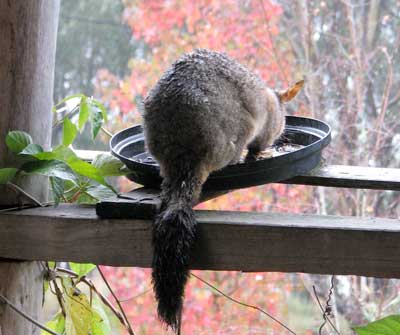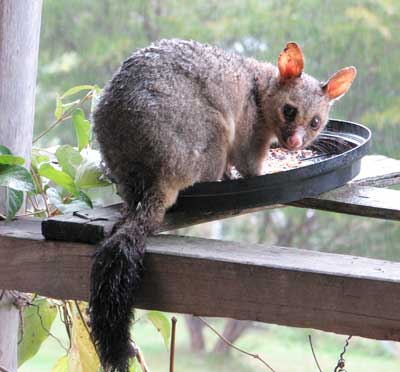
My ‘guest accommodation’ is an ex-workshop tacked on to a shed. It is of corrugated iron, but lined, and comfortable; far enough from my cabin for privacy, close enough for convenience, and with pleasant orchard views and surrounds.

When I returned after my two months away this winter, I suspected a possum had moved into the roof of this section. Telltale tufts of insulation wool were sticking out from between the roof and the window awning, and a few floated about on the grass.
I checked inside and all seemed fine.
But as spring advanced, I noticed that the climbing roses were being allowed to put forth new leaves and even buds – at least from the height at which the wallabies can’t reach. I assumed the rose-loving possum must have moved on — or had been digested by the python.

Something had changed inside, too: over each bed the ceiling lining had clearly been under stress. The double bed had a huge stain that went right through the mattress, and the top rug on the double decker bunks was bedecked with what looked like bits of nesting material.
Possums do mighty pees, so I could blame it for the stain, but the rest…? And what about the roses? Did I have a ‘live-and-let-live’ possum at last?
When I finally had a visitor willing to climb ladders and prise away roofing trims to investigate, the nest was there; in fact there were two, and full of scats large and small. They were not of possum origin, but quoll. In a way they were related to possums, as quolls eat them.
I had known a quoll was back, or visiting nightly, from fresh scats in the shed and on the verandah. A parmesan cheese wrapper got the once-over on the verandah the other night. I had assumed it was living in the shed, in the horizontal pile of old doors where my earlier quoll tenant had raised many young ones.
Clearly, this year’s quoll wanted better accommodation, with views. So until I can be sure whether it is a ‘she’, with offspring, no more can be done. If that’s the case, until the end of summer when the kids have come of age, I’ll have to turn away visitors or tell them to bring a tent. The beds have been stripped, moved, and plastic laid.
I need one of those signs they have in caravan parks and camping areas: ‘All visitors must call at office before proceeding further’.
But at least I might get some roses this summer.




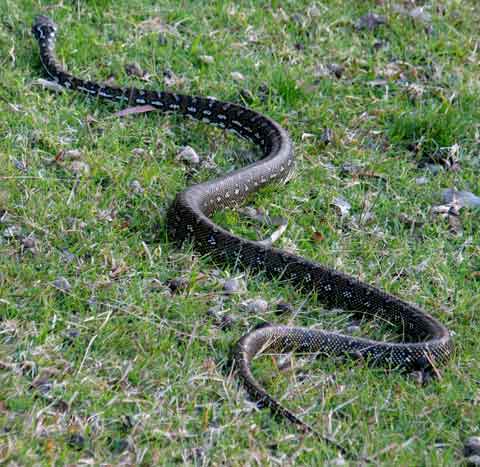
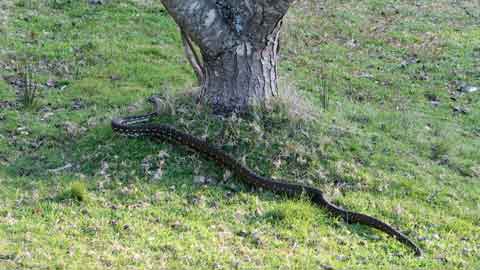

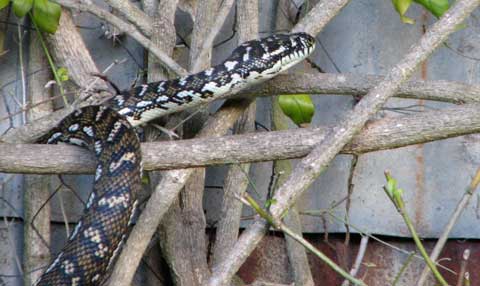
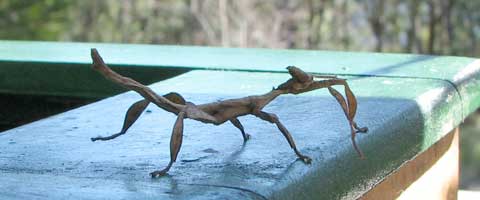
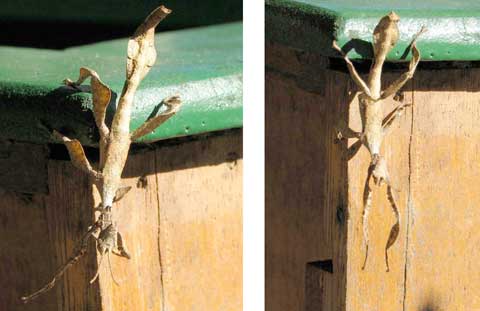
 For the second time in a few weeks, I have found evidence that a quoll is back on the block.
For the second time in a few weeks, I have found evidence that a quoll is back on the block. 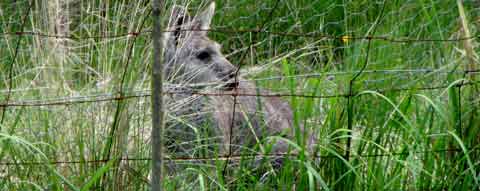 The longhairs of the macropods around here are the Wallaroos. I have always had one small family or a couple here, and they prefer the rocky edges, usually only coming close to drink at the dam. But lately the couple have been grazing near the fence line.
The longhairs of the macropods around here are the Wallaroos. I have always had one small family or a couple here, and they prefer the rocky edges, usually only coming close to drink at the dam. But lately the couple have been grazing near the fence line. Her male partner is the real standout — bigger and beefier, with long dark shaggy ‘hair’. He also has the doglike face, and perhaps the very long fur helps this impression. Much more wary than his wife, he stopped mid-munch at the sight of me.
Her male partner is the real standout — bigger and beefier, with long dark shaggy ‘hair’. He also has the doglike face, and perhaps the very long fur helps this impression. Much more wary than his wife, he stopped mid-munch at the sight of me. Drawing himself erect to show his broad chest and powerful shoulders, he soon took off into the treeline to hide from me. I don’t know if he had told her to follow or sent a warning, but she stayed put and kept eating. Was she smarter or just stubborn?
Drawing himself erect to show his broad chest and powerful shoulders, he soon took off into the treeline to hide from me. I don’t know if he had told her to follow or sent a warning, but she stayed put and kept eating. Was she smarter or just stubborn?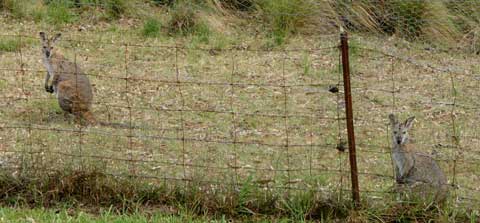 The dainty Red-necked Wallabies are my most common marsupial here, and I daily see small groups grazing along the yard fence line, not far from my verandah. When I appear, they usually look up to see what I’m doing, then it’s heads back down to resume eating.
The dainty Red-necked Wallabies are my most common marsupial here, and I daily see small groups grazing along the yard fence line, not far from my verandah. When I appear, they usually look up to see what I’m doing, then it’s heads back down to resume eating.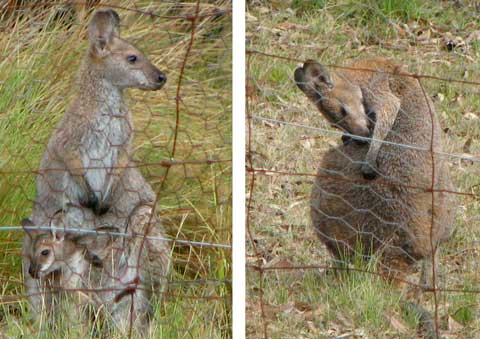 Often the Red-necked Wallaby mothers that I see here seem far too small to be mothers. By the time the joey is old enough to stay out of the pouch it is nearly as big as its mum. This one (left) wasn’t venturing out today but it was leaning out and doing a bit of practice grazing.
Often the Red-necked Wallaby mothers that I see here seem far too small to be mothers. By the time the joey is old enough to stay out of the pouch it is nearly as big as its mum. This one (left) wasn’t venturing out today but it was leaning out and doing a bit of practice grazing. But what was it? More important than identifying it now however, was to get a photograph, in case it flew off before I could see more details.
But what was it? More important than identifying it now however, was to get a photograph, in case it flew off before I could see more details.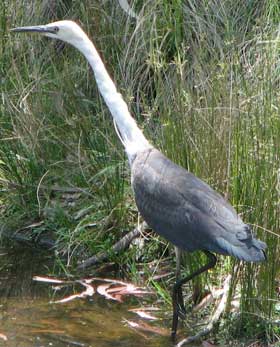 My bird book tells me it was a White-necked Heron.
My bird book tells me it was a White-necked Heron. Echidnas visit my house yard fairly often and I know there are several different individuals — like the blonde and the brunette who shared the yard for a while.
Echidnas visit my house yard fairly often and I know there are several different individuals — like the blonde and the brunette who shared the yard for a while.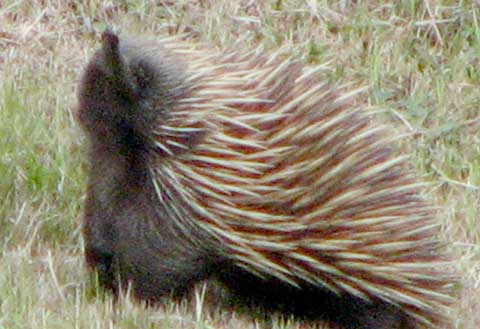 It seemed more wary than others and kept lifting its head and sniffing. I wasn’t game to go too close for fear of disturbing it so had to use the maximum zoom on my lens.
It seemed more wary than others and kept lifting its head and sniffing. I wasn’t game to go too close for fear of disturbing it so had to use the maximum zoom on my lens.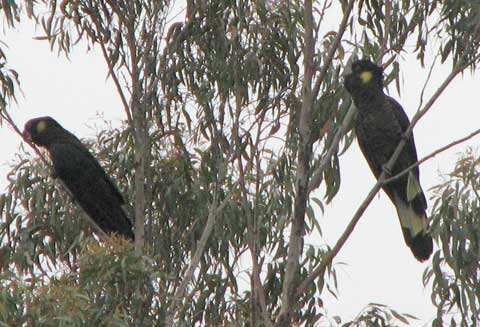 A bit of wet weather — and all hell broke loose in the forest around me.
A bit of wet weather — and all hell broke loose in the forest around me.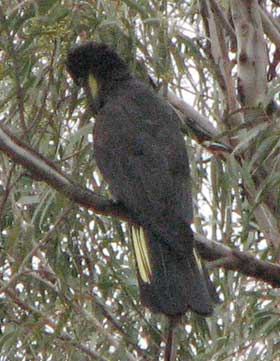 There were perhaps eight Yellow-tailed Black Cockatoos, swapping trees, snapping twigs, screeching across the clearing at full unmusical volume.
There were perhaps eight Yellow-tailed Black Cockatoos, swapping trees, snapping twigs, screeching across the clearing at full unmusical volume.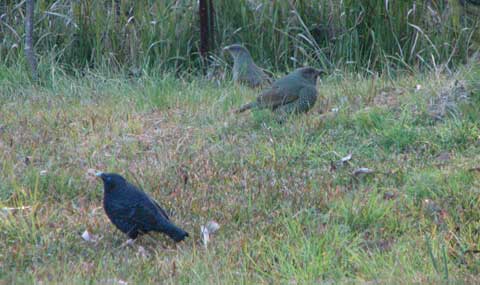 I see plump female Satin Bower-birds in my yard often, and hear them even more often — a creaking sound rather than music. The greeny-brown females are well camouflaged.
I see plump female Satin Bower-birds in my yard often, and hear them even more often — a creaking sound rather than music. The greeny-brown females are well camouflaged.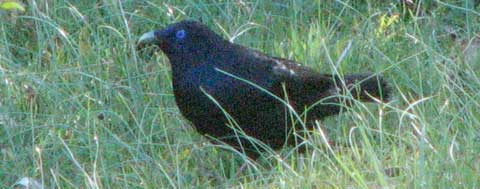 Yet the other morning, there he was in the bottom corner of the yard, below the 30-year-old bay tree, which offers dense cover for them if need be. He and two ladies were poking about in the grass.
Yet the other morning, there he was in the bottom corner of the yard, below the 30-year-old bay tree, which offers dense cover for them if need be. He and two ladies were poking about in the grass.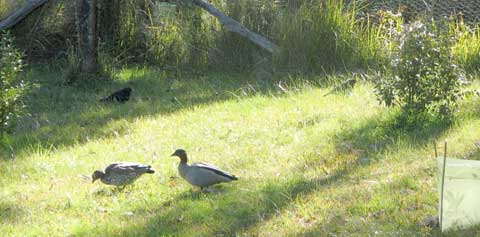 Then something outside my senses startled them all. With a single squawk the wood ducks took off to their safe haven in the middle of the dam. The bower birds all hopped in under the bushy base of the bay tree.
Then something outside my senses startled them all. With a single squawk the wood ducks took off to their safe haven in the middle of the dam. The bower birds all hopped in under the bushy base of the bay tree.